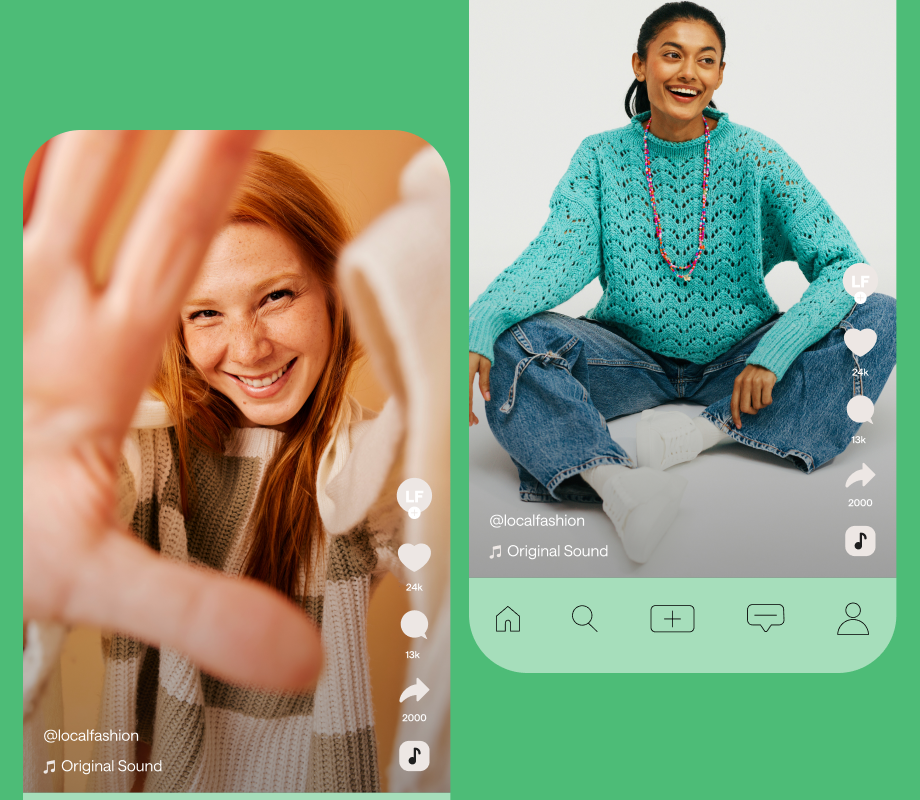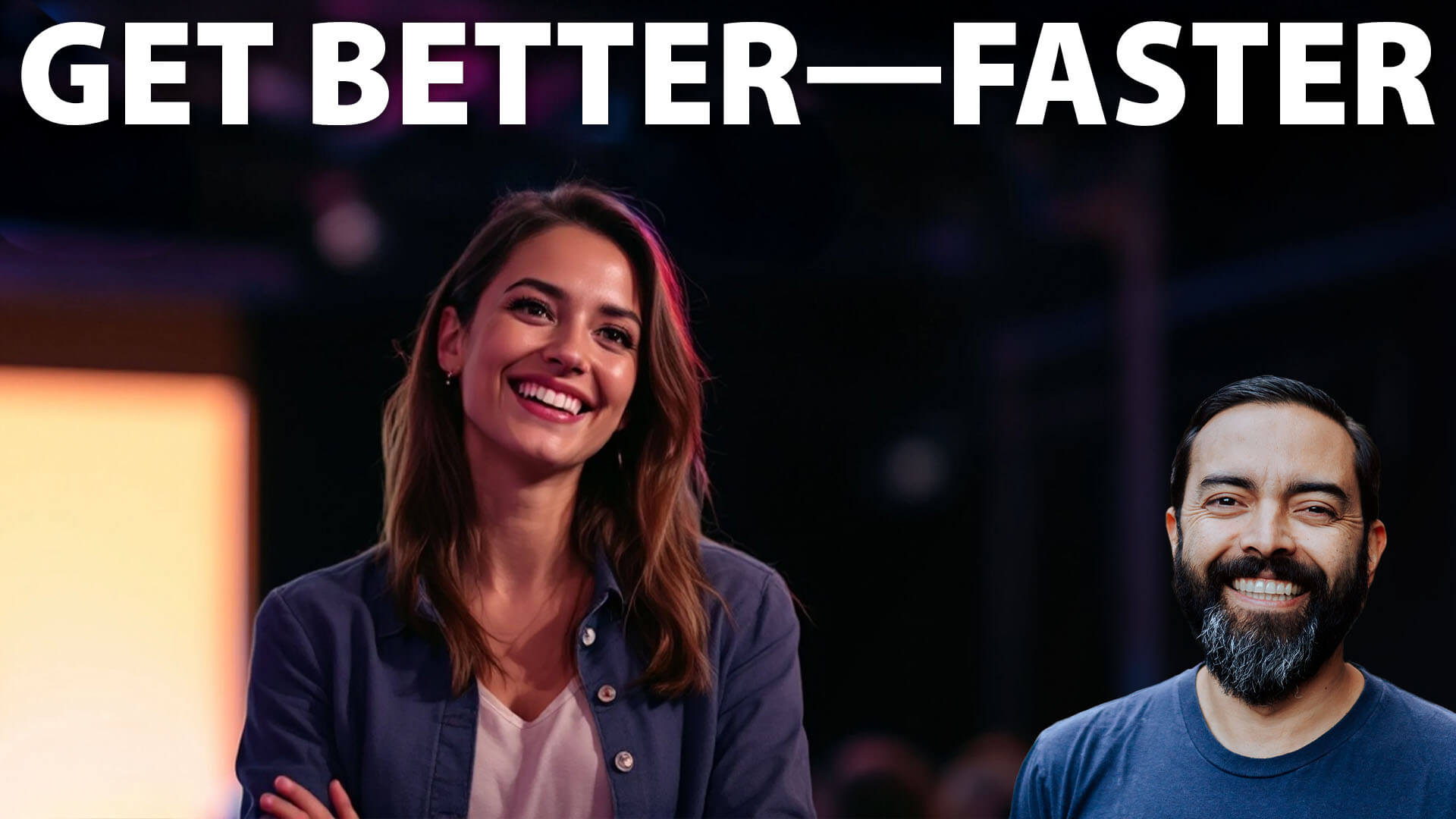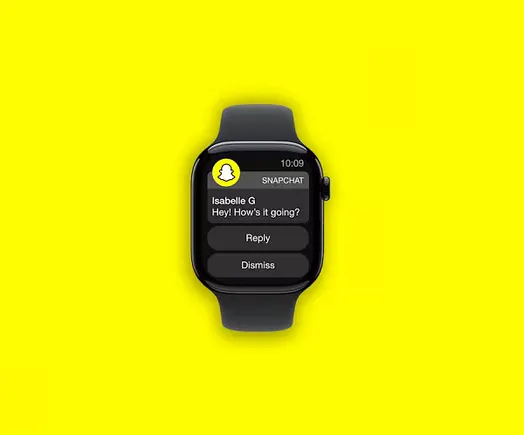How I Turned One Community Conversation Into Weeks' Worth of Content
In this post, we get into how I filled up my calendar with questions from my community.


I have a tendency to treat coming up with content ideas as a solo sport.
I’m used to sitting with my thoughts, combined with a post format I saw that I loved and want to recreate. And when I’m stuck, I scroll through my bookmarks with hundreds of post ideas for something to remix.
I’ve been fortunate that that system works time and time again for me — but it’s not the only way to create.
So, a few weeks ago, instead of forcing it, I tried something different that I should be doing way more often: I asked my community.
Not in a vague, “what should I post about?” way — but with a specific, open-ended question. And what followed was a flood of thoughtful, deeply relatable replies — the kind that made me realize that the best content ideas aren’t buried in your own brain. They’re hiding in your comment section.
In this post, I’ll share how I ran this mini experiment, the types of responses it sparked, and how I turned those replies into content that resonated — a self-sustaining flywheel. I’ll also break down how you can try it — whether you’re running a brand account, building your personal presence, or just feeling stuck on what to post next.
The experiment: Building content with, not just for, my community
I framed the whole thing as a lightweight experiment — one post, one question, one goal: to see what would happen if I handed the mic over to my audience.
In many ways, it functioned like a mini AMA — an open door to ask anything without the pressure of needing the “perfect” question. But it also went beyond that. This wasn’t just a Q&A — it became a content loop. The questions turned into posts, the posts sparked new conversations, and suddenly, my content strategy was rooted in real-time dialogue with the people I’m trying to reach.
It was an honest attempt to flip the script: to treat the comment section as the discovery, not the aftermath of a post.
Here’s what I posted:
“What’s a challenge, moment, or question you’ve faced related to personal branding or career growth that you’d love to see me unpack in a post?”
The most important factor in the success of this post is that it wasn’t me fishing for easy engagement. And it worked.
I heard from freelancers, strategists, job seekers, creators, and community managers — each with their own angle on what they were navigating. Some wanted help simplifying how they explain what they do. Others asked about balancing personal and company brands, or how to know when it’s time to pivot your content focus.
And somehow, every response sparked fresh ideas.
That was the moment it clicked: When you ask a question rooted in your content pillars, you don’t just get random replies — you get ready-made posts, straight from the people you’re trying to reach.
What my community asked
The responses covered more ground than I expected. In fact, although I was going to post more questions, I have so much content that I’m covered for several weeks from now, so I ended up only doing the one post.
Some questions were tactical:
- “How do I stay consistent with posting while working full-time?”
- “What should I tweak when my freelance pitches go quiet?”
- “How do I talk about my brand strategy work when it’s not visual?”
Others were more personal:
- “When do you know you’re ‘experienced enough’ to teach?”
- “How do you balance representing your company and being fully yourself?”
- “What’s the best way to explain what you do without rambling?”
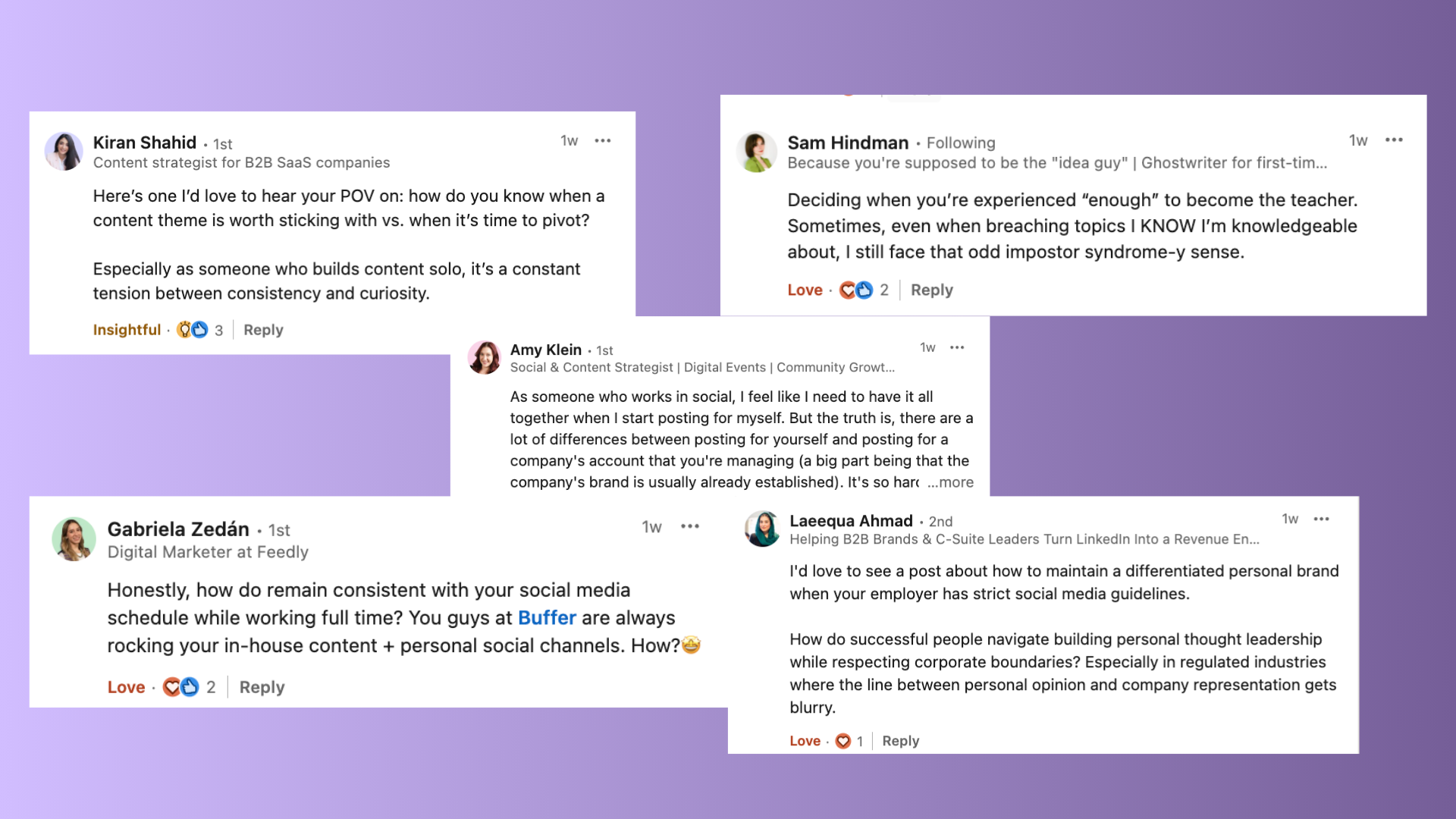
Nothing felt too out there for me to answer — even the question about which came first? The chicken or the egg? I pick chicken every time by the way.
It reminded me that your audience’s questions are rarely brand new — but they’re new challenges to them. And your perspective is new to them too. You don’t need to have an expert reply ready. You just need to listen, then share what you’ve figured out so far.
In many ways, the responses allowed me to write about things I might’ve otherwise skipped — not because they weren’t important, but because I thought they were too obvious. Turns out, “obvious” is often exactly what people need.
How I turned responses into posts
The real magic of this experiment wasn’t just in the replies — it was in what came next.
Every comment was a spark. Some turned into full reflections. Others became frameworks or jumping-off points for conversations I’d been meaning to have anyway. The best part? I didn’t have to guess if they’d resonate. I already knew they struck a chord — because someone asked for them.
Here’s how a few responses became real posts:
- The question: “How do you explain what you do without rambling?”→ The post: A breakdown of my one-sentence personal brand pitch and a template others could try.
- The question: “How do you balance your personal brand when you also work at a company?”→ The post: A reflection on boundaries, representation, and building a brand that reflects who you are at work, not just because of it.
Each post also credited the person (or people) who asked, creating a loop: someone felt seen, I created something useful, and others chimed in with even more to add.
When I looked back, I realized this format works specifically because it’s collaborative. It helps me write posts that don’t just reflect my own thinking — they reflect what people actually want to explore through my experience. And that gets them to engage.
Best practices for turning community insights into content
You don’t need a big audience or a viral post to try this. You just need a clear theme and a willingness to listen.
Here’s a simple way to crowdsource content ideas from your own community:
- Pick a day and a theme: Choose one of your content pillars — personal branding, remote work, freelancing, etc. — and set aside a day to post an open-ended question about it. You don’t need to over-explain, just show that you’re listening. This could take the shape of a focused AMA (“Ask me anything about pivoting your brand” or “What’s one thing you wish you knew before going freelance?”) to make it feel casual but targeted.
- Ask a question about your community, not yourself: Instead of “what should I write about?” try something like “What’s a challenge you’re currently facing around [topic] that you’d love to see unpacked in a post?” The goal is to get people to share what they actually care about — not just echo what they think sounds smart.
- Respond in the comments: Engage in real time, ask clarifying questions and reflect something back. The replies often get better the more you interact. And even if you don’t have the “perfect” answer, your take is still valuable. Share what’s worked for you, what you’ve noticed, or what you’re still figuring out. That honesty is often more helpful than a how-to list.
- Look for overlap or emotional weight: If multiple people are circling the same challenge — or if one comment makes you feel something — that’s your cue. Repetition and resonance are strong signals that it’s worth writing about.
- Turn replies into content (and credit them!): Even if you don’t quote them word-for-word, give a nod to the person who sparked the idea. It creates connection, builds trust, and encourages more engagement next time.
- Don’t try to answer everything at once: Some questions are bigger than a single post. Zoom in. Focus on one layer of the topic — the mindset shift, the first step, the personal story. You can always revisit it later from a different angle.
Even if you don’t turn a comment into content immediately, save it. I keep a backlog of questions and post ideas in Buffer, tagged by pillar and format, so I always have something to come back to when inspiration runs low.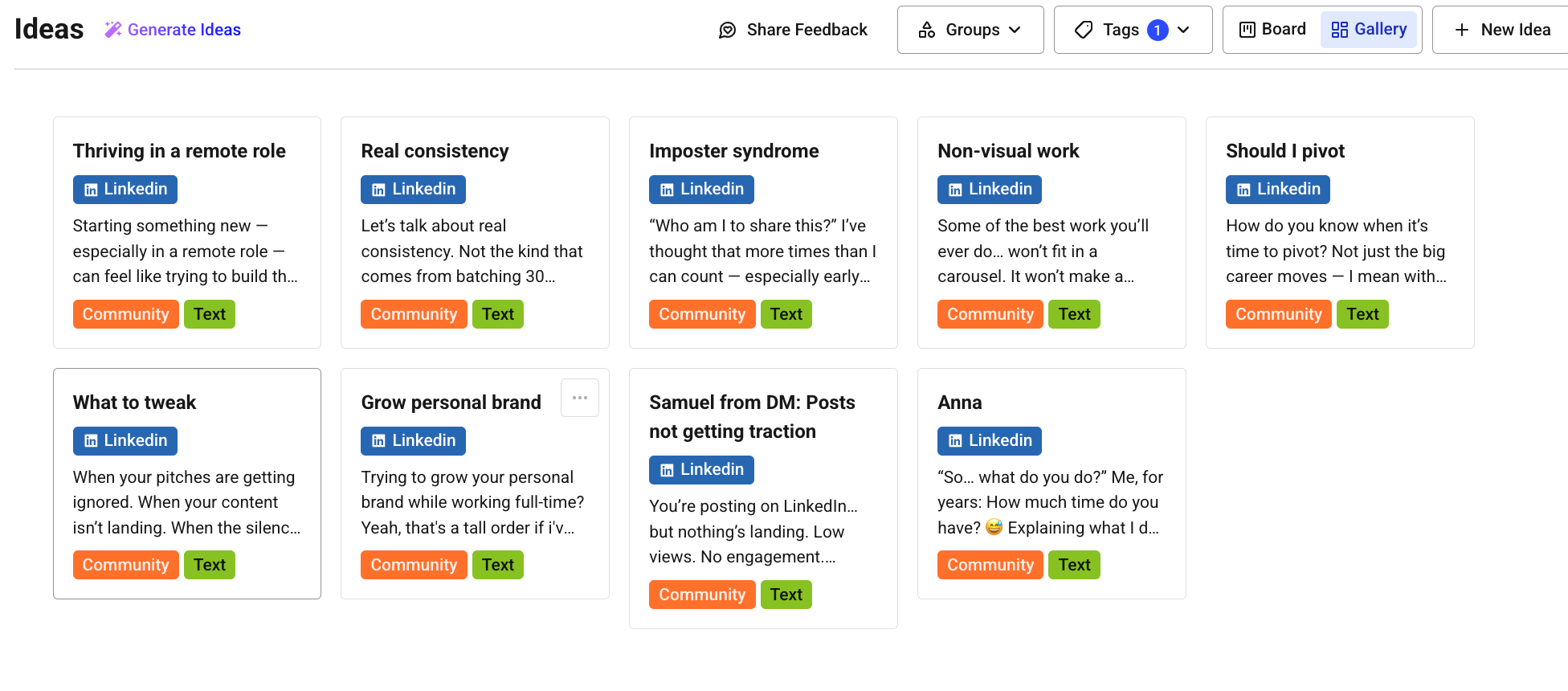



























![How To Launch, Grow, and Scale a Community That Supports Your Brand [MozCon 2025 Speaker Series]](https://moz.com/images/blog/banners/Mozcon2025_SpeakerBlogHeader_1180x400_Areej-abuali_London.png?auto=compress,format&fit=crop&dm=1747732165&s=beb7825c980a8c74f9a756ec91c8d68b#)
![Clicks Don’t Pay the Bills: Use This Audit Framework To Prove Content Revenue [Mozcon 2025 Speaker Series]](https://moz.com/images/blog/banners/Mozcon2025_SpeakerBlogHeader_1180x400_Hellen_London.png?auto=compress,format&fit=crop&dm=1747758249&s=9f3c5b1b7421f862beace1cb513053bb#)
![How To Create an Integrated Strategy That Increases Brand Mentions and Visibility [Mozcon 2025 Speaker Series]](https://moz.com/images/blog/banners/Mozcon2025_SpeakerBlogHeader_1180x400_JamesH_London.png?auto=compress,format&fit=crop&dm=1747780409&s=9bf9f0a2623b4a8be6eaf8f235115505#)

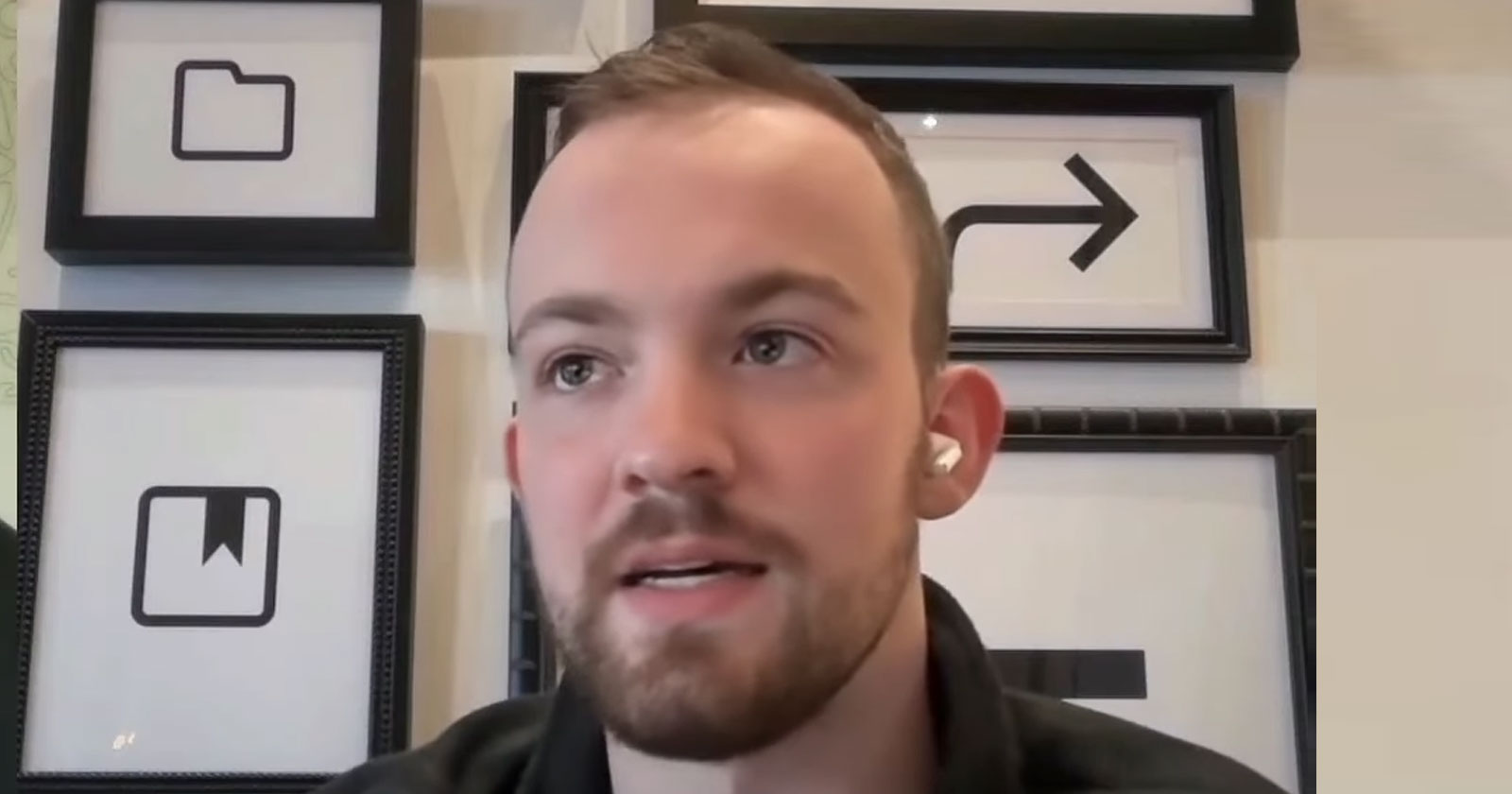







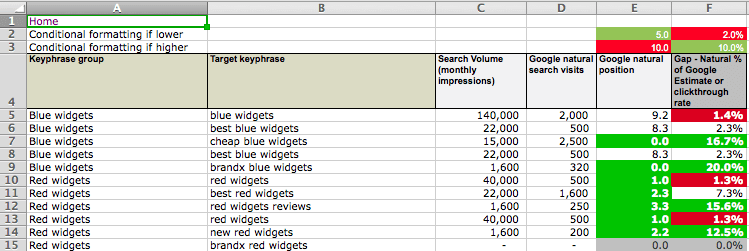
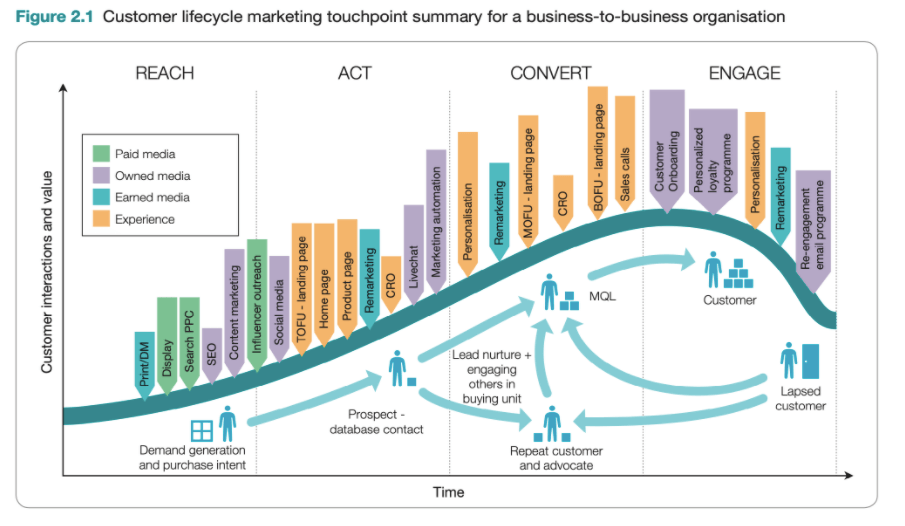










![The 11 Best Landing Page Builder Software Tools [2025]](https://www.growthmarketingpro.com/wp-content/uploads/2024/04/best-landing-page-software-hero-image-1024x618.png?#)










































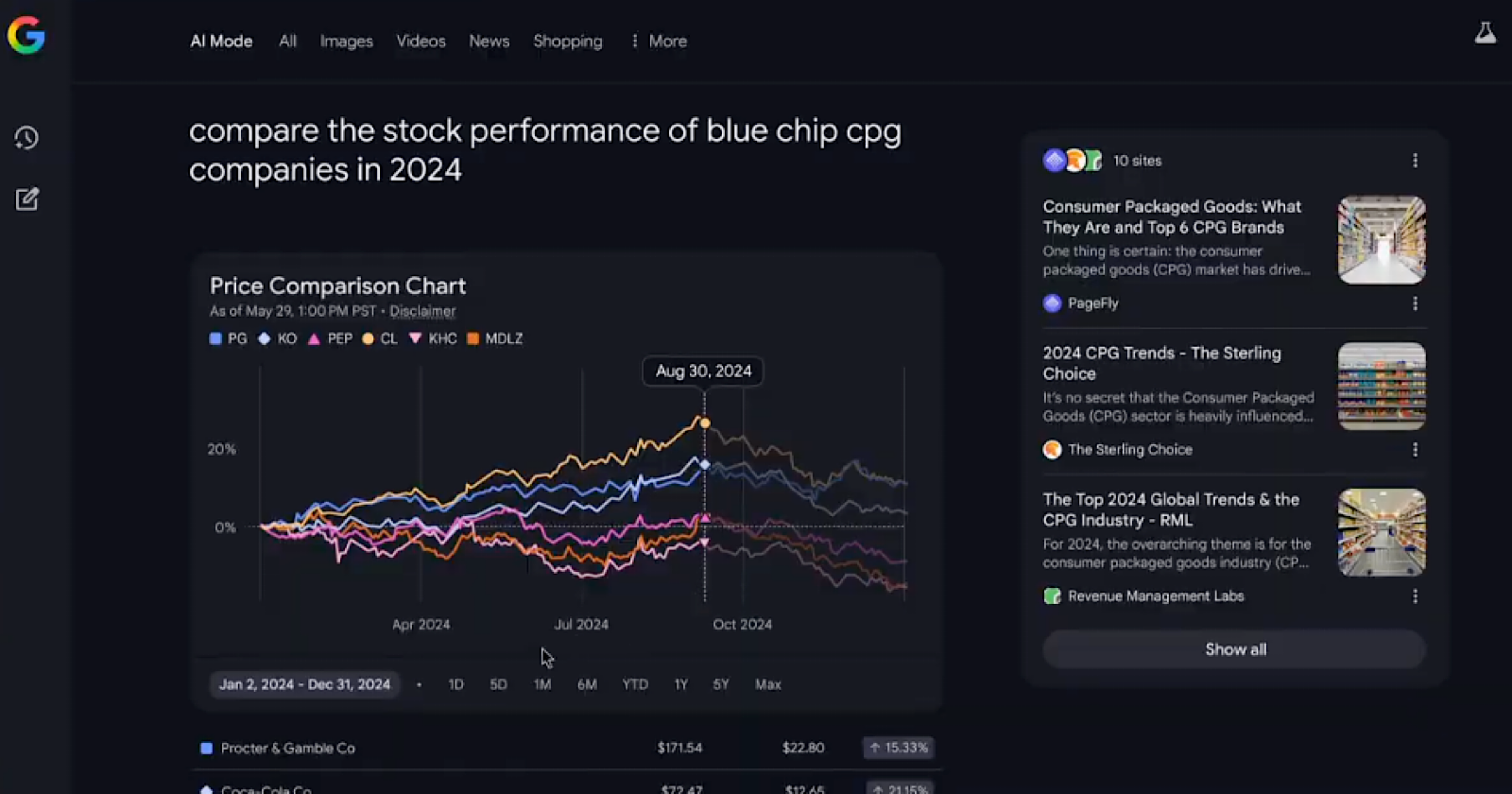











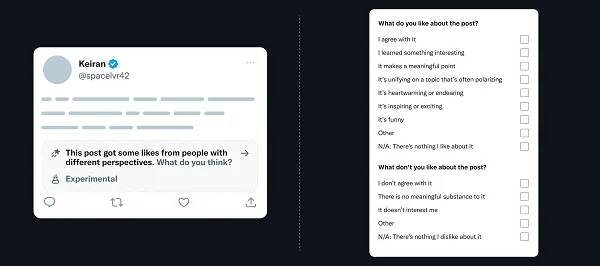
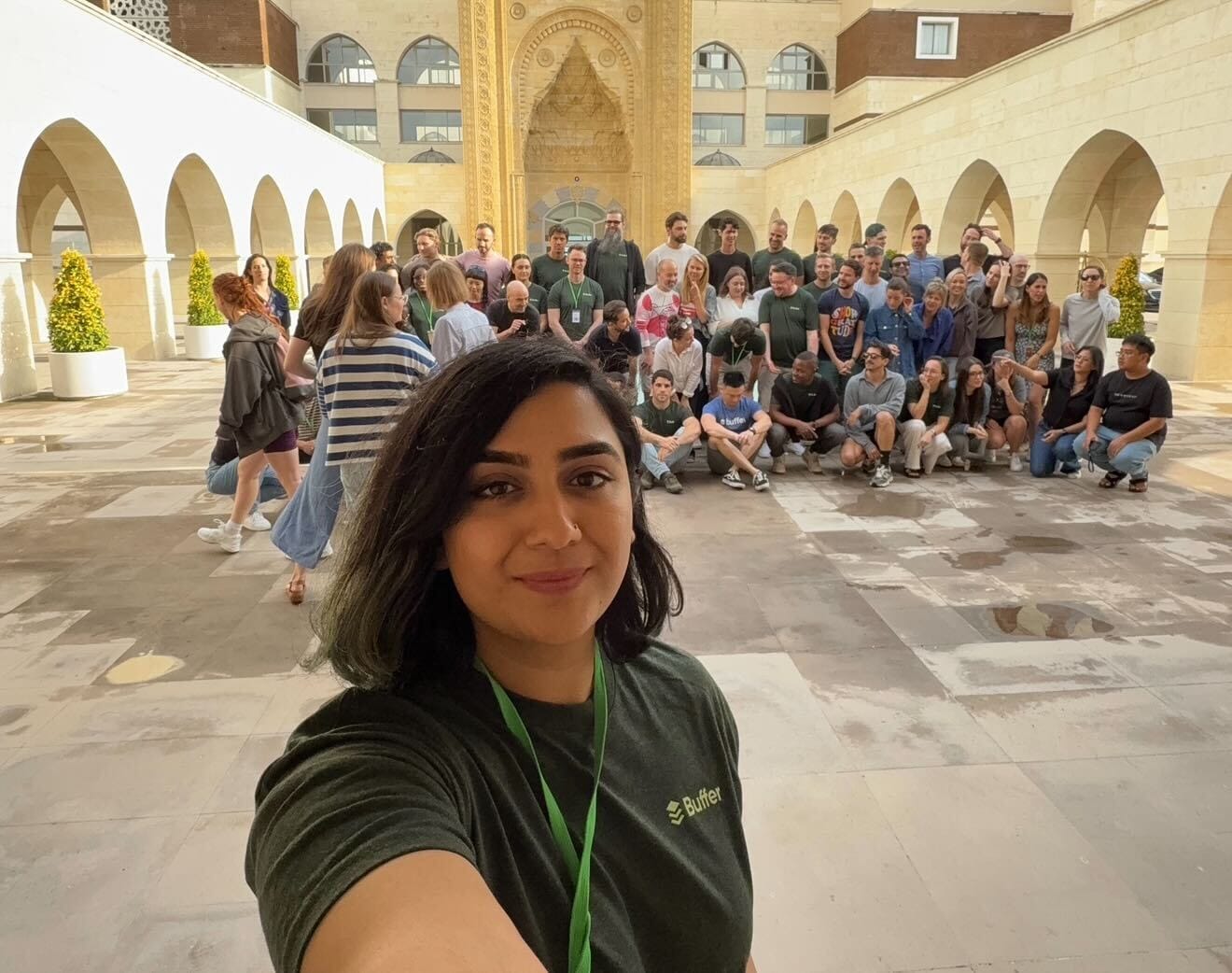


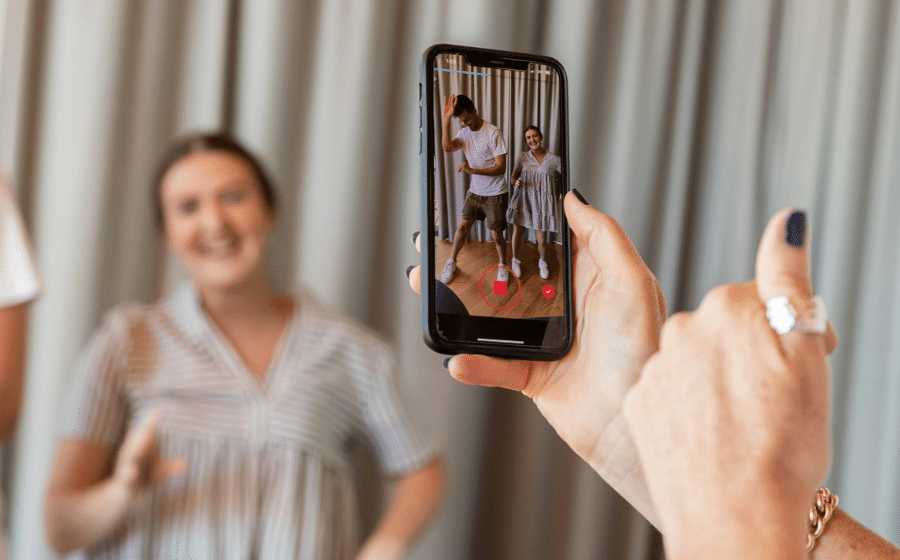






![Social media image sizes for all networks [June 2025]](https://blog.hootsuite.com/wp-content/uploads/2023/01/Social-Media-Image-Sizes-2023.png)


![41 Instagram features, hacks, & tips everyone should know about [new data]](https://www.hubspot.com/hubfs/Instagram-hacks-1-20240916-2633447.webp)




